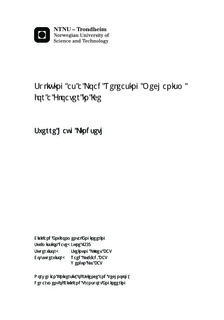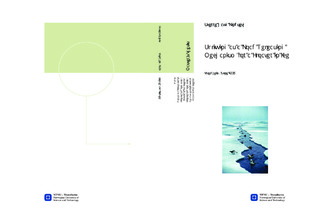| dc.contributor.advisor | Løset, Sveinung | nb_NO |
| dc.contributor.advisor | Lubbad, Raed | nb_NO |
| dc.contributor.advisor | Lu, Wenjun | nb_NO |
| dc.contributor.author | Lindseth, Sverre Haug | nb_NO |
| dc.date.accessioned | 2014-12-19T11:31:38Z | |
| dc.date.available | 2014-12-19T11:31:38Z | |
| dc.date.created | 2013-09-16 | nb_NO |
| dc.date.issued | 2013 | nb_NO |
| dc.identifier | 648747 | nb_NO |
| dc.identifier | ntnudaim:9009 | nb_NO |
| dc.identifier.uri | http://hdl.handle.net/11250/232542 | |
| dc.description.abstract | This master thesis divided into three parts: 1) A literature review on available literature concerning ice, fracture mechanics and theories for splitting of ice floes; 2) The development of a robust criterion for determination of whether an ice floe would be subject to only rigid body motions (unbreakable) during an ice-structure impact scenario; 3) Validation of existing linear elastic fracture mechanics approaches towards splitting, by means of the Cohesive Element Method (CEM) in Abaqus.The literature review of material properties of ice and splitting-related fracture mechanics highlighted the lack of theory, the insufficient amount of material tests and the general uncertainties related to fracture of ice. The most critical finding is the lack of full-scale tests of fracture toughness (KIC) and fracture energy release rate (Gc). Ongoing disputes regarding the size effect in ice needs to be addressed in order to make trustworthy simulations of splitting. Only then can splitting as a load releasing mechanism be used for improving design of ice management and geometric relationships for a floater in ice.Knowledge on which floes to treat as unbreakable is of great importance for the development of real-time numerical simulators for ship-ice interactions. A robust criterion for this purpose has been developed. The derivation of the criterion was the result of three different numerical simulations. Firstly, a framework based on analytical expressions for decoupling of the modes of motion for an ice floe was developed. Secondly, verification of the assumptions made in the decoupled model was performed by means of the commercial finite element software Abaqus. Lastly, an explicit ship-ice impact analysis proved inconsistency in the assumption of decoupled modes, whereafter conclusions were made that a floe with representative length and thickness (hice) of L<√(130hice-11) safely could be treated as unbreakable.Disregarding the uncertainties related to the material fracture parameters for ice, convergence between linear and nonlinear theory was found through consistent choice of KIC and Gc. Proving convergence of linear and nonlinear theory by CEM, provides both the possibility to use LEFM as an upper bound for simple calculations of splitting load, and the comfort for using CEM to model more complex cases including crack initiation. Furthermore, the possibility of obtaining reasonable results for examination of the crack growth velocity during rapid propagation was illustrated. The results obtained in this thesis thereby represent progression towards implementation of splitting for simulation and design procedures. Further research on this topic is needed in order to facilitate the development of the enabling technology required for arctic offshore developments. | nb_NO |
| dc.language | eng | nb_NO |
| dc.publisher | Institutt for bygg, anlegg og transport | nb_NO |
| dc.title | Splitting as a Load Releasing Mechanism for a Floater in Ice | nb_NO |
| dc.type | Master thesis | nb_NO |
| dc.source.pagenumber | 125 | nb_NO |
| dc.contributor.department | Norges teknisk-naturvitenskapelige universitet, Fakultet for ingeniørvitenskap og teknologi, Institutt for bygg, anlegg og transport | nb_NO |

